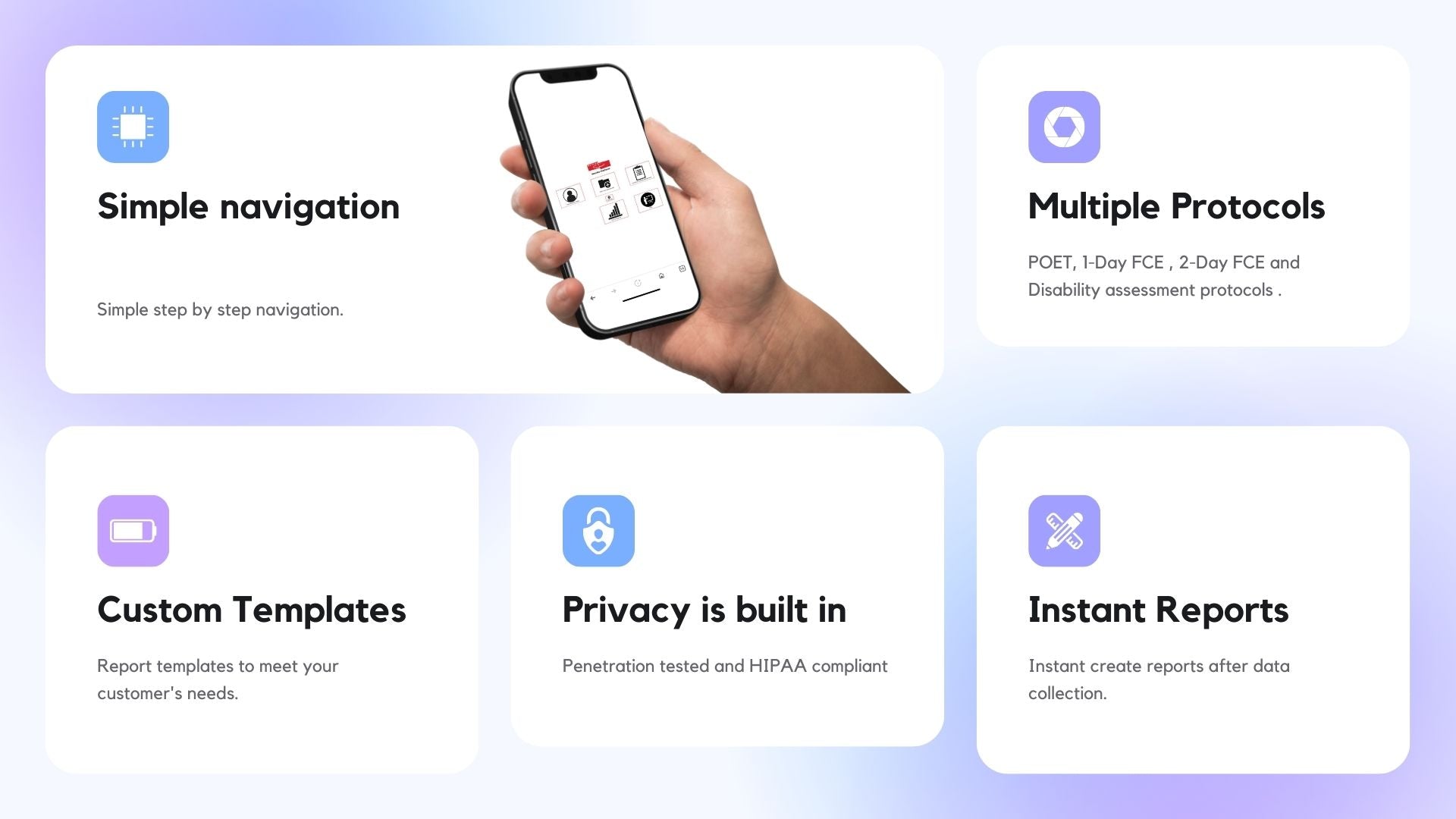**Guidelines for Work Conditioning/Hardening Programs**
**Introduction**
As an industry expert in rehabilitation and return to work, it's imperative to understand the significance of work conditioning and hardening programs in facilitating individuals' return to their job roles after an injury or illness. These programs serve as a crucial bridge between traditional rehabilitation and full-duty work, aiming to enhance physical and functional capacities while simulating the demands of the workplace environment. In this article, we will delve into the definition, historical evolution, current practices in North America, and the best practice guidelines for implementing effective work conditioning/hardening programs. Additionally, we will provide a case example to illustrate the application of these guidelines in real-world scenarios, with the end goal of educating physical therapists on optimizing work conditioning interventions.
**1. Definition of Work Conditioning/Hardening**
Work conditioning and work hardening are comprehensive, individualized rehabilitation programs designed to restore functional and occupational abilities of individuals with impairments affecting their work performance. These programs focus on improving strength, endurance, flexibility, cardiovascular fitness, and other functional capacities necessary for successful return to work. Work conditioning typically targets individuals with subacute injuries or conditions who have reached a plateau in traditional rehabilitation and require additional interventions to regain work-specific skills and abilities. On the other hand, work hardening is a more intensive and structured program intended for individuals with chronic or severe impairments, aiming to prepare them for the physical and psychological demands of their job roles.
**2. Brief History**
The concept of work conditioning and hardening emerged in the late 20th century in response to the growing need to address the unique rehabilitation requirements of injured workers. Historically, traditional rehabilitation programs often focused solely on restoring basic functional abilities without adequately preparing individuals for the specific demands of their occupations. Recognizing this gap, early pioneers in occupational rehabilitation began developing structured programs that integrated job simulation, functional activities, and progressive exercise routines tailored to individual work tasks. Throughout the decades, work conditioning and hardening programs evolved with advancements in rehabilitation science, technology, and interdisciplinary collaboration, leading to more comprehensive and evidence-based interventions.
**3. Current Use in North America**
In North America, work conditioning and hardening programs are widely utilized within the spectrum of occupational rehabilitation services. These programs are commonly offered in outpatient rehabilitation centers, industrial clinics, hospitals, and private practice settings, catering to diverse populations across various industries and occupations. The utilization of work conditioning/hardening programs is driven by the recognition of the significant economic and social impact of workplace injuries and illnesses, with employers, insurers, and healthcare providers increasingly prioritizing interventions aimed at facilitating timely and sustainable return to work outcomes. Moreover, regulatory bodies and accreditation agencies often emphasize the importance of incorporating work-specific activities and functional assessments into rehabilitation protocols, further promoting the adoption of work conditioning/hardening programs.
**4. Best Practice Guidelines**
Implementing work conditioning/hardening programs requires adherence to best practice guidelines to ensure safety, effectiveness, and optimal outcomes. Key components of these guidelines include:
**a. Comprehensive Assessment:** Conduct a thorough evaluation of the individual's medical history, functional abilities, work tasks, psychosocial factors, and vocational goals to inform program development and individualize interventions.
**b. Goal-Oriented Approach:** Establish clear and measurable goals aligned with the individual's functional capacities, job requirements, and return to work objectives. Goals should be specific, achievable, and time-bound to track progress effectively.
**c. Multidisciplinary Collaboration:** Foster interdisciplinary collaboration among physical therapists, occupational therapists, physicians, vocational specialists, and other relevant professionals to address the complex biopsychosocial needs of the individual and optimize rehabilitation outcomes.
**d. Functional Job Analysis:** Conduct a detailed analysis of the individual's job duties, physical demands, ergonomic factors, and environmental conditions to develop tailored interventions that simulate work tasks and promote task-specific functional improvements.
**e. Progressive Exercise Prescription:** Design individualized exercise programs focused on improving strength, endurance, flexibility, and cardiovascular fitness, progressively challenging the individual's physiological capacities while addressing specific work-related deficits and functional goals.
**f. Job Simulation and Task Training:** Integrate simulated work activities, job-specific tasks, and functional training exercises into the rehabilitation program to replicate the demands of the individual's job role, enhance task-specific skills, and facilitate transfer of learning to the workplace.
**g. Psychosocial Support:** Address psychosocial barriers to return to work, such as fear-avoidance beliefs, anxiety, depression, and workplace concerns, through cognitive-behavioral strategies, motivational interviewing, peer support, and workplace accommodations.
**h. Graduated Return to Work:** Implement a phased and structured return-to-work plan that gradually reintegrates the individual into their job role, with modifications as needed to accommodate functional limitations and ensure a successful transition.
**i. Outcome Measurement and Monitoring:** Use standardized outcome measures, functional assessments, and work performance metrics to evaluate progress, track functional gains, identify barriers to return to work, and adjust interventions accordingly throughout the rehabilitation process.
**5. Case Example: Sarah's Journey Back to Work**
Sarah is a 38-year-old warehouse worker who sustained a lower back injury while lifting heavy boxes at work. She has completed initial rehabilitation for her injury but continues to experience pain and functional limitations that prevent her from returning to her job duties. Sarah's physical therapist recommends enrolling her in a work conditioning program to address her specific work-related challenges and facilitate her return to work.
**Assessment:** Sarah undergoes a comprehensive assessment, including a review of her medical history, physical examination, functional capacity evaluation, and job analysis. The assessment reveals deficits in core strength, lumbar flexibility, lifting mechanics, and endurance necessary for her job role.
**Goal Setting:** Based on the assessment findings and Sarah's vocational goals, the rehabilitation team collaborates with her to establish SMART (Specific, Measurable, Achievable, Relevant, Time-bound) goals, such as improving core strength by 25%, increasing lifting capacity to 50 pounds, and reducing pain intensity during work tasks by 50% within 8 weeks.
**Intervention:** Sarah's work conditioning program incorporates a combination of progressive exercise routines, functional activities, and job simulation tasks tailored to her job requirements. She participates in core stabilization exercises, lumbar flexibility training, manual handling techniques, and cardiovascular conditioning sessions designed to replicate the physical demands of her job role.
**Psychosocial Support:** Throughout the program, Sarah receives psychosocial support and education to address her fear of reinjury, coping strategies for managing pain at work, and communication skills for advocating for ergonomic modifications in her workplace.
**Graduated Return to Work:** As Sarah progresses in her rehabilitation, the rehabilitation team collaborates with her employer to implement a phased return-to-work plan, initially starting with light-duty tasks and gradually increasing her workload and responsibilities as she demonstrates improved functional capacities and confidence.
**Outcome Measurement:** Regular assessments and outcome measures, such as the Oswestry Disability Index, Functional Capacity Evaluation, and job-specific performance metrics, are utilized to monitor Sarah's progress, track functional gains, and adjust her rehabilitation plan accordingly.
**Conclusion**
Work conditioning and hardening programs play a vital role in facilitating the successful return to work of individuals with injuries or illnesses by addressing their specific functional and occupational needs. By adhering to best practice guidelines, including comprehensive assessment, goal-oriented interventions, multidisciplinary collaboration, and outcome measurement, physical therapists can optimize the effectiveness of work conditioning interventions and promote positive outcomes for their clients. Through the integration of evidence-based practices and individualized care, we can empower injured workers like Sarah to regain their functional
independence, restore their vocational abilities, and resume productive participation in the workforce.
Learn More. Earn More.
-

FCE certification
Enroll in our FCE certification -

Measurement tools
Learn more about our tools -

Software
Explore our software



